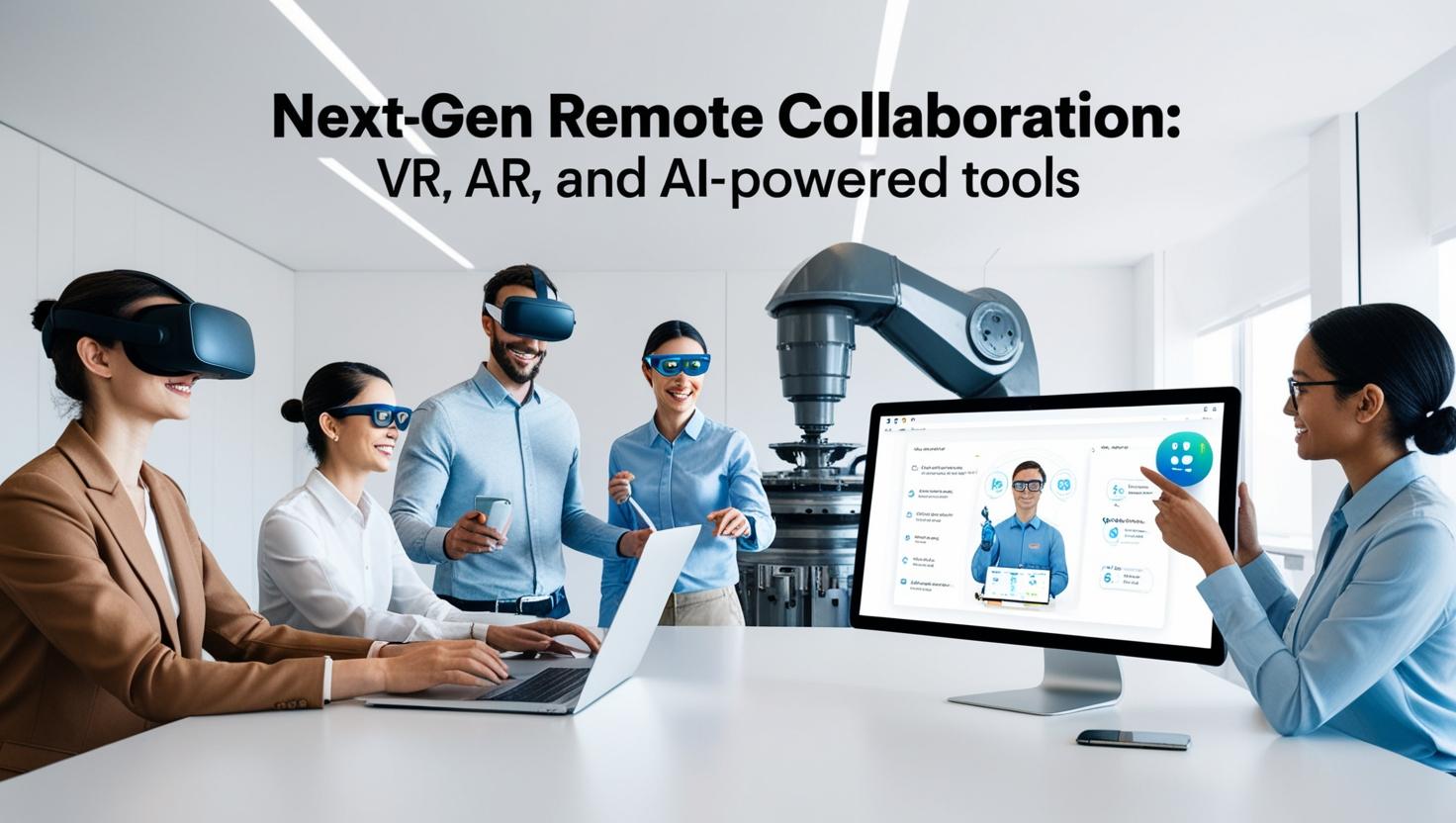Introduction
By 2025, over 70% of teams will use immersive tech for collaboration (Gartner, 2023). The rise of hybrid work has accelerated demand for remote collaboration tools that go beyond Zoom grids. Enter VR, AR, and AI—technologies reshaping virtual teamwork through lifelike meetings, hands-on remote support, and predictive project management. In this guide, we explore how these innovations are solving today’s collaboration challenges and redefining the future of work.
VR for Virtual Meetings: Beyond the Grid
Immersive Meeting Experiences
VR replaces flat screens with 3D environments where avatars gesture, whiteboards float in mid-air, and teams brainstorm in virtual conference rooms. Studies show VR meetings boost engagement by 25% (Stanford, 2022) by mimicking in-person dynamics.
Top VR Meeting Platforms
- Meta Horizon Workrooms: Host meetings in customizable spaces with spatial audio.
- Spatial: Collaborate using avatars and 3D models, ideal for design teams.
Benefits & Challenges
- ✅ Pros: Enhanced presence, creative freedom.
- 🚧 Cons: High hardware costs ($300-$1,000/headset), motion sickness for some users.
Tip: Pilot VR with small teams using affordable headsets like Meta Quest 3 before scaling.
AR for Remote Assistance: Bridging the Physical Gap
Real-Time Guidance and Support
AR overlays digital instructions onto real-world environments. For example, Boeing uses AR glasses to guide technicians through aircraft wiring, cutting errors by 40% (Boeing Case Study, 2023).
Industry Use Cases
- Healthcare: Surgeons stream operations to mentors via AR headsets for live feedback.
- Manufacturing: Remote experts annotate machinery views to resolve issues 50% faster (PwC, 2024).
Leading AR Tools
- Microsoft HoloLens 2: Hands-free diagrams for complex repairs.
- PTC Vuforia: AR workflows for frontline workers.
AI-Driven Project Management: The Brain Behind the Team
Intelligent Task Automation
AI tools like Asana’s “Smart Workflows” auto-assign tasks based on skills and deadlines, reducing manual oversight by 30%.
Predictive Analytics
Platforms like Monday.com forecast delays using historical data, adjusting timelines proactively. AI-driven risk detection slashes project overruns by 22% (Forrester, 2023).
Key Platforms
- ClickUp: AI writes meeting summaries and action items.
- Trello: Automates sprint planning with machine learning.
Pro Tip: Use AI analytics to prioritize high-impact tasks and flag burnout risks in distributed teams.
The Future of Remote Collaboration
- Holographic Meetings: Startups like PORTL project life-sized 3D holograms for boardrooms.
- AI Avatars: Synthesia’s digital clones handle routine standups, freeing humans for strategy.
- Decentralized Workspaces: Blockchain-powered platforms like Somnium Space enable secure, global teamwork.
Expert Insight: “By 2030, AI will manage 80% of project coordination, letting humans focus on innovation,” says tech analyst Maribel Lopez.
Conclusion
Remote collaboration tools powered by VR, AR, and AI are no longer sci-fi—they’re here, solving real-world challenges from miscommunication to inefficiency. While adoption hurdles like costs and training exist, early adopters gain a competitive edge in talent retention and productivity.
Citations:
- Gartner: https://gartner.com/remote-work-trends
- Boeing Case Study: https://boeing.com/ar-innovation
- Forrester Report: https://forrester.com/ai-project-management


















